Mena economies living dangerously
27 December 2023

 Gaza conflict puts the region on edge once again
Gaza conflict puts the region on edge once again
Middle East and North Africa (Mena) economies enter 2024 in a state of flux. While most are well placed to continue their post-pandemic growth trajectory, albeit in the context of weaker oil sector growth, some states – Egypt and Tunisia notable among them — are under pressure to undertake painful reforms in order to elicit IMF funding packages.
Overall, hopes are high that growth in the Mena region will at least outpace the sluggish performance of the past year. Policymakers across the region will also be looking to double down on the private sector dynamism that saw non-oil growth outpace hydrocarbons performances in 2023.
The overall rear-view mirror is not especially encouraging. The IMF’s Regional Economic Outlook has Mena real GDP slowing to 2 per cent in 2023 from 5.6 per cent in 2022, a decline attributed to the impact of lower oil production among exporters and tighter monetary policy conditions in the region’s emerging market and middle-income economies. Geopolitical tensions – not least the Gaza conflict – and natural disasters in Morocco and Libya have also weighed on regional economies.
GDP growth
The World Bank estimates that in per capita terms, GDP growth across the region decreased from 4.3 per cent in 2022 to just 0.4 per cent in 2023. By the end of 2023, it says, only eight of 15 Mena economies will have returned to pre-pandemic real GDP per capita levels.
Much hinges on developments in the oil market. The Opec+ decision on 30 November to agree voluntary output reductions that will extend Saudi and Russian cuts of 1.3 million barrels a day (b/d), is designed to shore up prices, but it will come at a cost.
Saudi Arabia’s GDP data for the third quarter of 2023 revealed the full impact of output restraint, as the economy contracted at its fastest rate since the pandemic. Saudi GDP notably declined by 3.9 per cent in the third quarter compared to the previous quarter – after the kingdom implemented an additional voluntary 1 million b/d oil output cut.
As a whole, GCC economic growth has been tepid, despite a resurgence in services hotspots such as the UAE, where retail and hospitality sectors have boomed. The World Bank’s Gulf Economic Update report, published in late November, sees GCC growth at just 1 per cent in 2023, although this is expected to rise to 3.6 per cent in 2024.
Oil sector activity is expected to contract by 3.9 per cent in 2024 as a result of the recurrent Opec+ production cuts and global economic slowdown, according to Capital Economics. However, weaker oil sector activity will be compensated for by non-oil sectors, where growth is projected at a relatively healthy 3.9 per cent in 2024, supported by sustained private consumption, strategic fixed investments and accommodative fiscal policy.
“There has not been much GDP growth this year, but the non-oil economy has been surprisingly robust and resilient, despite the fact that the liquidity has not been as much of a driver as it was a year earlier,” says Jarmo Kotilaine, a regional economic expert.
“Of course, the cost of capital has gone up and there have been some liquidity constraints. But we do have a lot of momentum in the non-oil economy.”
In Saudi Arabia, beyond its robust real estate story, the ventures implemented under the national investment strategy are unfolding and semi-sovereign funds are playing a key role in ensuring continuity. “You are seeing more of these green energy projects across the region. It really has been a surprisingly positive story for the non-oil economy,” says Kotilaine.
Government spending
Fiscal policy will remain loose, at least among Mena oil exporters, whose revenues endow them with greater fiscal fire-power.
Saudi Arabia’s 2024 pre-budget statement bakes in further budget deficits, with government spending for 2023 and 2024 expected to be 34 per cent and 32 per cent higher, respectively, than the finance ministry had projected in the 2022 budget. This is not just higher spending on health, education and social welfare, but also marked increases in capital expenditure, including on the kingdom’s gigapojects.
That luxury is not open to the likes of Bahrain and Oman, the former recording the highest public debt-to-GDP ratio in the region at 125 per cent in 2023. Those two Gulf states will need to maintain a closer watch on their fiscal positions in 2024.
There are broader changes to fiscal policy taking place in the Gulf states, notes Kotilaine, some of which will be registered in 2024. “There are areas that the government will play a role in, but in a much more selective and focused manner. Much less of the overall story now hinges on government spending than it used to in the GCC,” he says.
For 2024, a consensus is emerging that the Mena region should see GDP growth of above 3 per cent. That is better than 2023, but well below the previous year and, warns the IMF, insufficient to be strong or inclusive enough to create jobs for the 100 million Arab youth who will reach working age in the next 10 years.
The Mena region’s non-oil buoyancy at least offers hope that diversification will deliver more benefits to regional populations, reflecting the impact of structural reforms designed to improve the investment environment and make labour markets more flexible.
“The labour market in the region continues to strengthen, with business confidence and hiring activity reverting to pre-pandemic levels,” says Safaa el-Tayeb el-Kogali, World Bank country director for the GCC. “In Saudi Arabia, private sector workforce has grown steadily, reaching 2.6 million in early 2023. This expansion coincides with overall increases in labour force participation, employment-to-population ratio, and a decrease in unemployment.”
El-Kogali adds that non-oil exports across the GCC region continue to lag, however. “While the substantial improvement in the external balances of the GCC over the past years is attributed to the exports of the oil sector, few countries in the region have also shown progress in non-oil merchandise exports. This requires close attention by policymakers to further diversify their exports portfolio by further promoting private sector development and competitiveness.”
Regional trade
There is a broader reshaping of the Gulf’s international trading and political relations, shifting away from close ties with the West to a broader alignment that includes Asian economies. The entry of Saudi Arabia, the UAE and Iran to the Brics group of emerging market nations, taking effect in 2024, is a sign of this process.
The decision of the Saudi central bank and People’s Bank of China in November 2023 to agree a local-currency swap deal worth about $7bn underscores the kingdom’s reduced reliance on the Western financial system and a greater openness to facilitating more Chinese investment.
“You want to be as multi-directional, as multi-modal as you can,” says Kotilaine. “For the Gulf states, it is almost like they are trying to transcend the old bloc politics. It is not about who your best friend is. They want to think of this in terms of a non-zero sum game, and that worked very well for them during the global financial crisis when they had to pivot from the West to the East.”
Near-term challenges
While long-term strategic repositioning will influence Mena economic policy-making in 2024, there will be near-term issues to grapple with. High up that list is the Gaza conflict, the wider regional impacts of which are still unknown.
Most current baseline forecasts do not envisage a wider regional escalation, limiting the conflict’s impacts on regional economies. The initial spike in oil prices following the 7 October attacks dissipated fairly quickly.
Egypt is the most exposed to a worsening of the situation in Gaza, sharing a land border with the territory. However, the Gaza crisis is not the only challenge facing the North African country
Elections set for 10 December will grant President Abdelfattah al-Sisi another term in office, but his in-tray is bulging under a host of economic pressures.
Inflation peaked at 41 per cent in June 2023. A currency devaluation is being urged, as a more flexible pound would offer a better chance of attracting much-needed capital inflows.
The corollary is that it would have to be accompanied by an interest rate hike. Capital Economics sees a 200 basis point increase to 21.25 per cent as the most likely outcome, ratcheting up the pain on Egyptian businesses and households.
A deal with the IMF would do much to settle Egyptian nerves, with a rescue plan worth $5bn understood to be in the offing. But Egypt has to do more to convince the fund that it is prepared to undertake meaningful fiscal reforms. Privatisations of state assets, including Egypt Aluminum, will help.
Other Mena economies will enjoy more leeway to chart their own economic path in 2024. Iraq has achieved greater political stability over the past year, and may stand a better chance of reforming its economy, although weaker oil prices will limit the heavily hydrocarbons-dominated economy’s room for manoeuvre.
Jordan is another Mena economy that has managed to tame inflation. Like Egypt, however, the country is also heavily exposed to what happens in Gaza.
Few could have predicted the bloody events that followed the 7 October attacks. Mena region economic strategists will be hoping that 2024 will not bring further surprises.
|
Can the Gulf build back better? The GCC has done much to put itself on the global map through effective reputation building. But, notes regional economic expert Jarmo Kotilaine, the focus of policy will now have to change from building more to building better, making the existing infrastructure and systems operate with greater efficiency. Above all, the region will need dynamic and adaptable companies and an economically engaged workforce. “The reality is the GCC has a lot of capital committed to the old economy. There is the question of how much of that should be upgraded, or made to work better, because fundamentally, one of the region’s big challenges is that local economies have very low levels of productivity.” It is by upgrading what the GCC has, by incorporating technology and energy efficiency, that the region can make productivity growth a driver, he tells MEED. “One area where GCC economies have started to make progress is in services: logistics, tourism, financial services. This is bringing money to the region,” he says. “We are also starting to see new potential export streams with things like green energy, and obviously green hydrogen. But the Gulf states have to manufacture more, and they have to manufacture better.” |
Exclusive from Meed
-
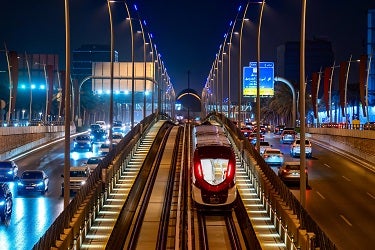
-
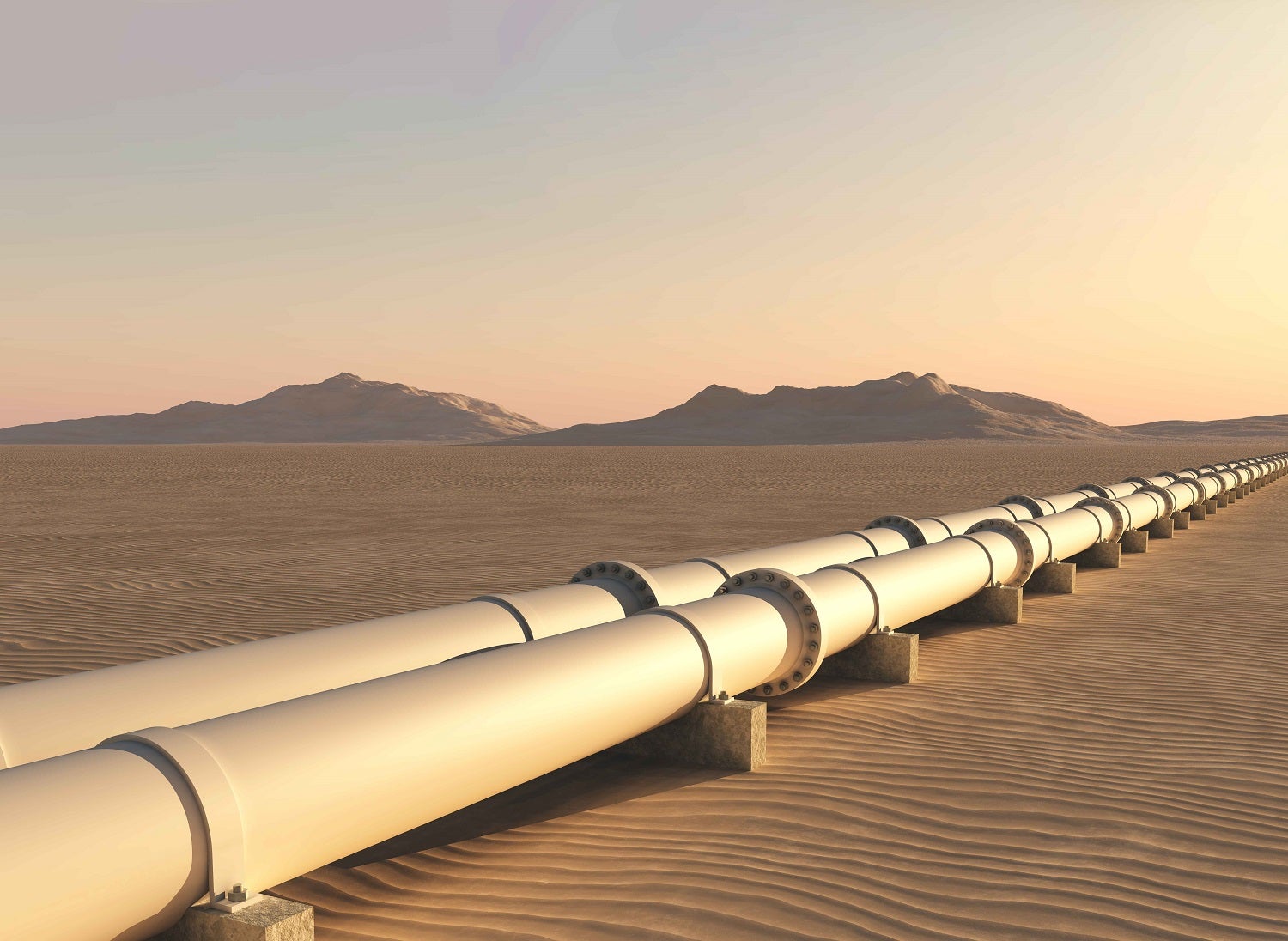
-
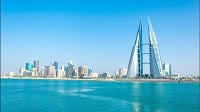 Bahrain and US sign nuclear energy agreement
Bahrain and US sign nuclear energy agreement17 July 2025
-
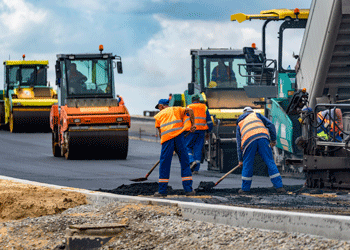 Kuwaiti firm wins $53m Duqm coastal road contract
Kuwaiti firm wins $53m Duqm coastal road contract17 July 2025
-
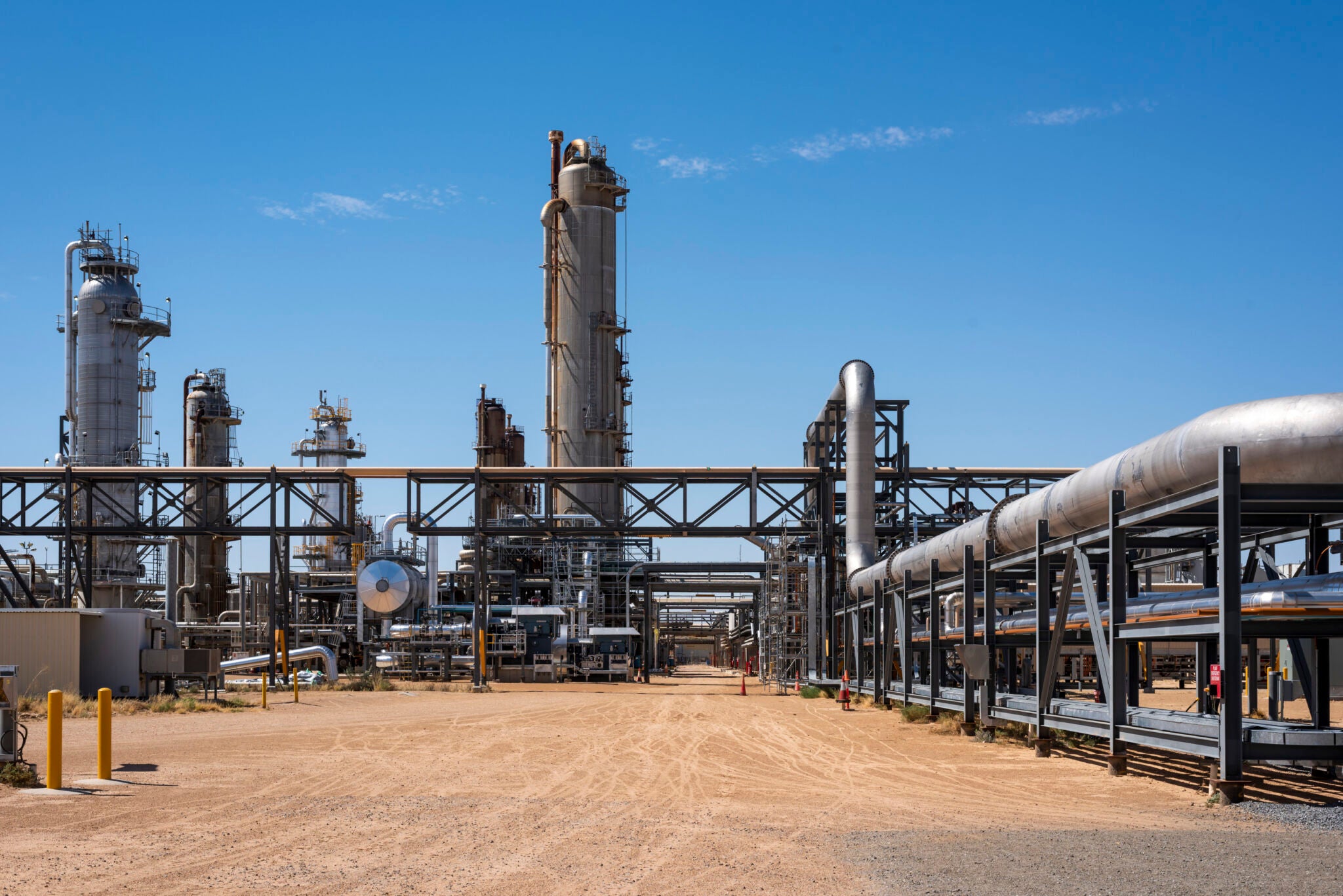
All of this is only 1% of what MEED.com has to offer
Subscribe now and unlock all the 153,671 articles on MEED.com
- All the latest news, data, and market intelligence across MENA at your fingerprints
- First-hand updates and inside information on projects, clients and competitors that matter to you
- 20 years' archive of information, data, and news for you to access at your convenience
- Strategize to succeed and minimise risks with timely analysis of current and future market trends

Related Articles
-
 Riyadh Royal Commission awards metro Line 2 extension
Riyadh Royal Commission awards metro Line 2 extension18 July 2025

Register for MEED’s 14-day trial access
Saudi Arabia’s Royal Commission for Riyadh City (RCRC) has awarded an estimated $800m-$900m contract to build the next phase of the Riyadh Metro project, which is the Line 2 extension.
The contract was awarded to the Arriyadh New Mobility Consortium.
The Line 2 extension is 8.4 kilometres (km) long, of which 1.3km is elevated and 7.1km is underground. It includes five stations – two elevated and three underground.
It will run from where Line 2 currently ends at King Saud University (KSU) and then travel onwards to new stations at KSU Medical City, KSU West, Diriyah East, Diriyah Central, where it interchanges with the planned Line 7, and then finally to Diriyah South.
According to the consortium’s official website, the consortium members include Italy’s Webuild, India’s Larsen & Toubro, locally based Nesma & Partners, Japan’s Hitachi, Italy’s Ansaldo STS, the Canadian firm Bombardier, Spain’s Idom and WorleyParsons from Australia.
In 2013, the Arriyadh New Mobility Consortium secured Riyadh Metro’s Line 3 project for $5.21bn.
Line 3, also known as the Orange Line, stretches from east to west, from Jeddah Road to the Second Eastern Ring Road, covering a total distance of 41km.
Riyadh Metro
Riyadh Metro’s first phase features six lines with 84 stations.
The RCRC completed the phased rollout of the Riyadh Metro network when it started operating the Orange Line on 5 January.
In December last year, the RCRC started operating the Red Line and Green Line.
The Red Line, also known as Line 2, stretches 25.1km from the east of Riyadh to the west, via King Abdullah Road, connecting King Fahd Sports City and King Saud University. It has a total of 15 stations.
The Green Line, also known as Line 5, extends 13.3km from King Abdullah Road to the National Museum. With 12 stations, it serves several ministries and government agencies, including the Defence Ministry, the Finance Ministry and the Commerce Ministry, as well as other areas.
Earlier in December, the RCRC started operating the Blue Line (Line 1), Yellow Line (Line 4) and Purple Line (Line 6).
The Blue Line connects Olaya Street to Batha; the Yellow Line runs along King Khalid International Airport Road; while the Purple Line connects Abdul Rahman Bin Awf Road with Al-Sheikh Hassan Bin Hussain Road.
King Salman Bin Abdulaziz Al-Saud inaugurated the Riyadh Metro on 27 November last year.
The network spans 176km. Four of the stations have been designed by signature architects.
The metro is part of the Riyadh Public Transport Project, which encompasses metro and bus systems. The project aims to relieve traffic congestion.
The $23bn project was scheduled to open in 2018, but construction activity slowed due to disputes over prolongation and the disruption caused by the Covid-19 pandemic.
The RCRC awarded the main construction packages for the scheme on 28 July 2013.
In November 2022, the RCRC struck a deal with three contracting consortiums working on the Riyadh Metro scheme regarding the completion of the project’s remaining works.
The Fast consortium won lines 4, 5 and 6, reportedly valued at $7.82bn. The Bacs consortium was awarded lines 1 and 2 for $9.45bn, while Arriyadh New Mobility secured Line 3 for $5.21bn.
US firm Bechtel leads the Bacs consortium. Italian firm Ansaldo STS is the leader of the Arriyadh New Mobility group, and Spanish firm FCC Construccion heads the Fast consortium.
AtkinsRealis has delivered programme management and supervision services for the operations and maintenance of the Riyadh Metro scheme.
https://image.digitalinsightresearch.in/uploads/NewsArticle/14289337/main.jpg -
 Firms submit bids for Maaden gold project water pipeline
Firms submit bids for Maaden gold project water pipeline17 July 2025

Saudi Arabian Mining Company (Maaden) has received proposals from local firms for a water pipeline network it plans to build as part of a larger project to develop a new gold mining and processing facility in the Al-Rjum region of the kingdom.
The Al-Rjum gold mining and processing facility, located in Medina province, is expected to be commissioned by the end of 2027. It will become the largest gold mining operation in Saudi Arabia when operational.
According to sources, the pipeline is to be developed using a build-own-operate-transfer (BOOT) model. The engineering, procurement and construction (EPC) works will have a duration of 38 months, followed by a 20-year operations and maintenance period.
Lamar Holding and Alkhorayef are understood to be the only bidders for the proposed Taif to Al-Rjum water pipeline, which forms package B of the Maaden gold mining project.
The two contractors submitted bids for the water pipeline project on 1 July, sources told MEED.
The main scope of work involves building a 150-kilometre pipeline that will supply treated sewage effluent water to the Al-Rjum gold mining facility.
ALSO READ: Saudi Arabia issues mining exploration licences
The Al-Rjum gold mining and processing facility will have an output capacity of 250,000 ounces of gold a year. The project will increase Maaden’s total gold production to 700,000 ounces a year by 2028, helping the company support Saudi Arabia’s overall goal of doubling gold production by 2030 and achieving a four-fold increase in output by 2040.
MEED recently reported that Maaden had received bids for a tender to develop accommodation facilities for over 4,500 of its workers at the upcoming Al-Rjum gold mining and processing facility.
Bids for the Al-Rjum worker accommodation tender, which is also under the BOOT model, were submitted in late June. The operations and maintenance period for this contract is 15 years.
ALSO READ: Saudi Arabia and Oman open up their minerals potential
https://image.digitalinsightresearch.in/uploads/NewsArticle/14284263/main3503.jpg -
 Bahrain and US sign nuclear energy agreement
Bahrain and US sign nuclear energy agreement17 July 2025
Bahrain and the US have signed a cooperation agreement covering the field of peaceful nuclear energy.
The agreement aims to enhance collaboration in nuclear energy, recognising its vital role in sustainable development and energy security. It aligns with Bahrain's ambitious goal of achieving carbon neutrality by 2060 and contributes to global efforts to combat climate change.
As Bahrain explores alternative energy sources, senior officials have previously indicated to MEED that they are closely monitoring developments in small modular reactor (SMR) technology. This is particularly crucial for Bahrain, where limited land availability poses challenges for solar energy projects. Floating solar plants have been identified as a potential solution, but the exploration of nuclear energy and SMRs remains a priority for future energy diversification.
The agreement was signed during an official visit to the US by Prince Salman Bin Hamad Al-Khalifa, the crown prince and prime minister of Bahrain.
The agreement was formalised by Abdullatif Bin Rashid Al-Zayani, Bahrain’s minister of foreign affairs, and Marco Rubio, the US secretary of state.
Al-Zayani added that the agreement builds upon the Comprehensive Security Integration and Prosperity Agreement (C-SIPA) signed in 2023. The agreement aims to strengthen cooperation in defence, security, emerging technologies, trade and investment.
 READ THE JULY 2025 MEED BUSINESS REVIEW – click here to view PDF
READ THE JULY 2025 MEED BUSINESS REVIEW – click here to view PDFUAE and Turkiye expand business links; Renewed hope lies on the horizon for trouble-beset Levant region; Gulf real estate momentum continues even as concerns emerge
Distributed to senior decision-makers in the region and around the world, the July 2025 edition of MEED Business Review includes:
> AGENDA: UAE-Turkiye trade gains momentum> INTERVIEW 1: Building on UAE-Turkiye trade> INTERVIEW 2: Turkiye's Kalyon goes global> INTERVIEW 3: Strengthening UAE-Turkiye financial links> INTERVIEW 4: Turkish Airlines plans further growth> CURRENT AFFAIRS: Middle East tensions could reduce gas investments> GCC REAL ESTATE: Gulf real estate faces a more nuanced reality> PROJECTS MARKET: GCC projects market collapses> INTERVIEW 5: Hassan Allam eyes role in Saudi Arabia’s transformation> INTERVIEW 6: Aseer region seeks new investments for Saudi Arabia> LEADERSHIP: Nuclear power makes a global comeback> LEVANT MARKET FOCUS: Levant states wrestle regional pressures> GULF PROJECTS INDEX: Gulf projects index continues climb> CONTRACT AWARDS: Mena contract award activity remains subdued> ECONOMIC DATA: Data drives regional projects> OPINION: A farcical tragedy that no one can endTo see previous issues of MEED Business Review, please click herehttps://image.digitalinsightresearch.in/uploads/NewsArticle/14281751/main.jpeg -
 Kuwaiti firm wins $53m Duqm coastal road contract
Kuwaiti firm wins $53m Duqm coastal road contract17 July 2025
Kuwaiti contractor Combined Group Contracting Company (CGCC) has won a RO20.6m ($53m) contract to construct coastal roads in Duqm.The scope of work covers the construction of roads with a total length of 14 kilometres, including a coastal road, a proposed service road, an extension to an existing service road, a resort street, four roundabouts, future extensions and proposed links.
The contract duration is two years from the start date of construction.
MEED reported in August 2023 that CGCC had emerged as the lowest bidder for the project.
GlobalData estimates that the construction industry in Oman will grow by 3.6% in real terms in 2025, supported by rising foreign direct investment (FDI) in the country, particularly in the manufacturing sector, as well as investment in the energy and transport sectors.
The infrastructure construction sector is estimated to grow by 5.7% in 2025, before recording an annual average growth of 5.2% between 2026 and 2029, supported by the government’s investment in upgrading road and airport infrastructure.
CGCC’s contract win in Oman comes shortly after a key contract win in the UAE, worth AED685m ($186m).
The scope of work under this contract encompasses the upgrade works on Emirates Road, from the Al-Badea intersection in Sharjah to the E55 intersection in Dubai.
The UAE’s Ministry of Energy & Infrastructure is the project client.
The contract duration is 25 months.
 READ THE JULY 2025 MEED BUSINESS REVIEW – click here to view PDF
READ THE JULY 2025 MEED BUSINESS REVIEW – click here to view PDFUAE and Turkiye expand business links; Renewed hope lies on the horizon for trouble-beset Levant region; Gulf real estate momentum continues even as concerns emerge
Distributed to senior decision-makers in the region and around the world, the July 2025 edition of MEED Business Review includes:
> AGENDA: UAE-Turkiye trade gains momentum> INTERVIEW 1: Building on UAE-Turkiye trade> INTERVIEW 2: Turkiye's Kalyon goes global> INTERVIEW 3: Strengthening UAE-Turkiye financial links> INTERVIEW 4: Turkish Airlines plans further growth> CURRENT AFFAIRS: Middle East tensions could reduce gas investments> GCC REAL ESTATE: Gulf real estate faces a more nuanced reality> PROJECTS MARKET: GCC projects market collapses> INTERVIEW 5: Hassan Allam eyes role in Saudi Arabia’s transformation> INTERVIEW 6: Aseer region seeks new investments for Saudi Arabia> LEADERSHIP: Nuclear power makes a global comeback> LEVANT MARKET FOCUS: Levant states wrestle regional pressures> GULF PROJECTS INDEX: Gulf projects index continues climb> CONTRACT AWARDS: Mena contract award activity remains subdued> ECONOMIC DATA: Data drives regional projects> OPINION: A farcical tragedy that no one can endTo see previous issues of MEED Business Review, please click herehttps://image.digitalinsightresearch.in/uploads/NewsArticle/14281451/main.gif -
 Algeria awards $855m contract for gas production project
Algeria awards $855m contract for gas production project17 July 2025
Register for MEED’s 14-day trial access
Algeria’s national oil and gas company Sonatrach has awarded an $855m contract to China’s Jereh Group for a project to develop facilities at the Rhourde Nouss gas field.
Jereh Group said that its subsidiary Jereh Oil & Gas Engineering will build a natural gas booster station in the Rhourde Nouss gas field and upgrade and renovate related transmission pipelines.
The Yantai-based company cited a letter of award from Sonatrach and said that the contract will boost the company's footprint in North Africa’s oil and gas engineering service sector.
The Rhourde Nouss boosting project will centralise the boosting of natural gas produced by the gas field and the adjacent Gassi Touil gas field, to improve their production efficiency and natural gas processing capacity, the company said.
Sonatrach, the largest gas producing company in Africa and the largest state-owned enterprise in Algeria, will pay $629.1m and $226m for the construction of the project, Jereh said.
Jereh's growing footprint
Jereh has been expanding overseas in recent years and has won contracts with major Middle Eastern oil and gas clients, including Saudi Aramco, Abu Dhabi National Oil Company (Adnoc) and Kuwait Petroleum Corporation.
In June 2021, the company was awarded a contract for the design, procurement and construction of a gas debottlenecking project in Algeria.
The project was located in the Bir Rebaa Nord and Rhourde Ouled Djemma fields, which are located in the eastern Algerian desert, about 300 kilometres southeast of Hessi Messaoud.
The client on that project was Groupement Sonatrach Eni, a joint venture of Sonatrach and Italian energy company Eni.
 READ THE JULY 2025 MEED BUSINESS REVIEW – click here to view PDF
READ THE JULY 2025 MEED BUSINESS REVIEW – click here to view PDFUAE and Turkiye expand business links; Renewed hope lies on the horizon for trouble-beset Levant region; Gulf real estate momentum continues even as concerns emerge
Distributed to senior decision-makers in the region and around the world, the July 2025 edition of MEED Business Review includes:
> AGENDA: UAE-Turkiye trade gains momentum> INTERVIEW 1: Building on UAE-Turkiye trade> INTERVIEW 2: Turkiye's Kalyon goes global> INTERVIEW 3: Strengthening UAE-Turkiye financial links> INTERVIEW 4: Turkish Airlines plans further growth> CURRENT AFFAIRS: Middle East tensions could reduce gas investments> GCC REAL ESTATE: Gulf real estate faces a more nuanced reality> PROJECTS MARKET: GCC projects market collapses> INTERVIEW 5: Hassan Allam eyes role in Saudi Arabia’s transformation> INTERVIEW 6: Aseer region seeks new investments for Saudi Arabia> LEADERSHIP: Nuclear power makes a global comeback> LEVANT MARKET FOCUS: Levant states wrestle regional pressures> GULF PROJECTS INDEX: Gulf projects index continues climb> CONTRACT AWARDS: Mena contract award activity remains subdued> ECONOMIC DATA: Data drives regional projects> OPINION: A farcical tragedy that no one can endTo see previous issues of MEED Business Review, please click herehttps://image.digitalinsightresearch.in/uploads/NewsArticle/14278458/main.jpg

